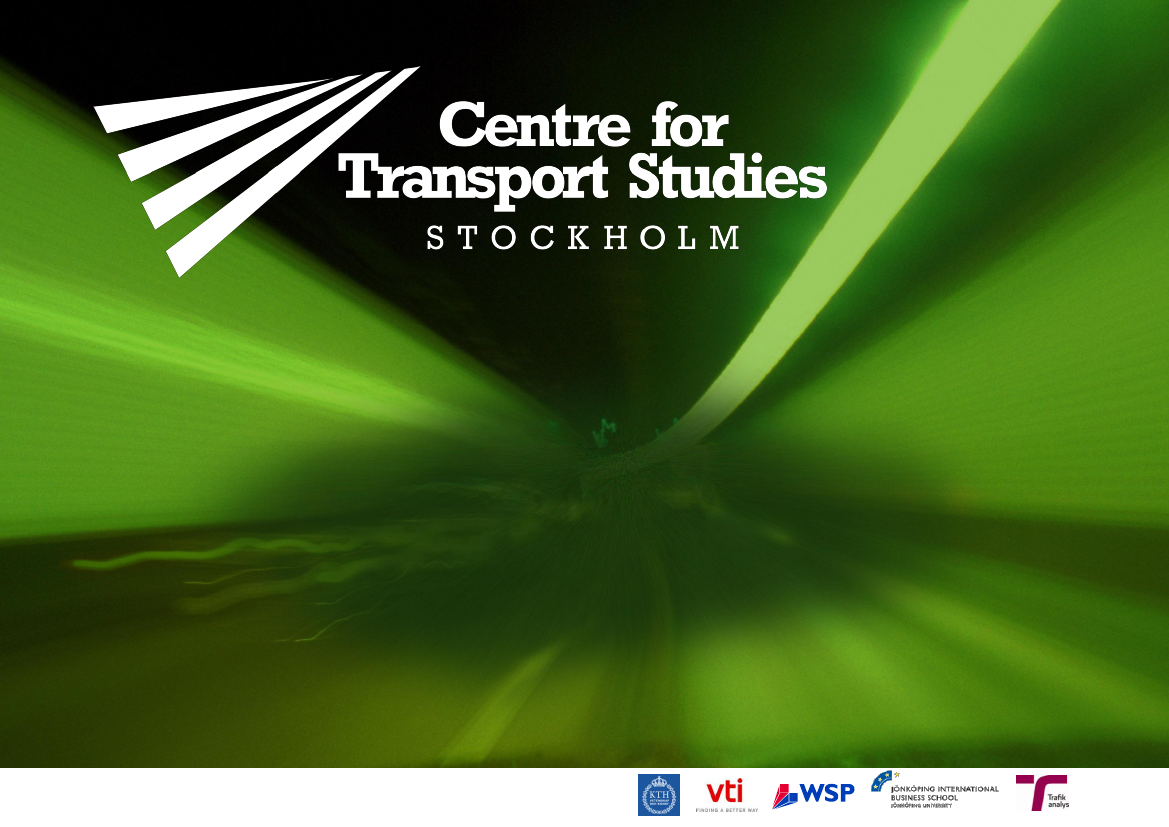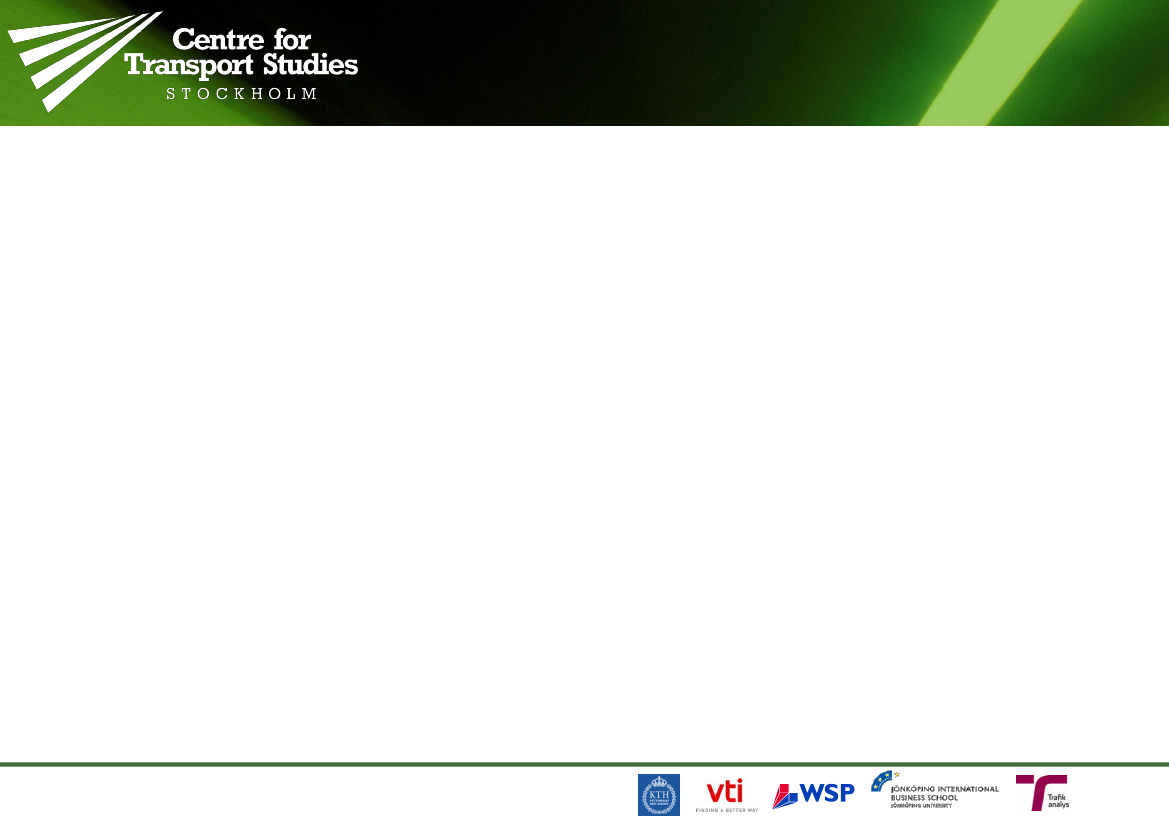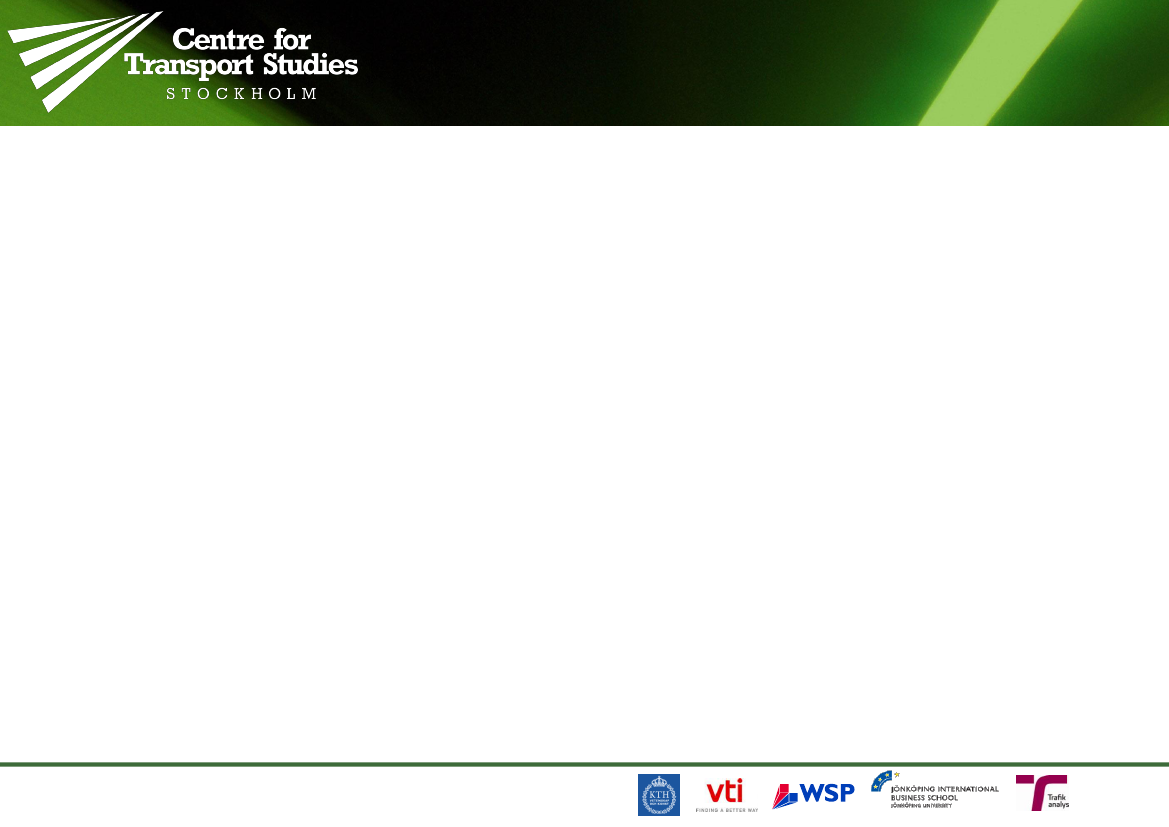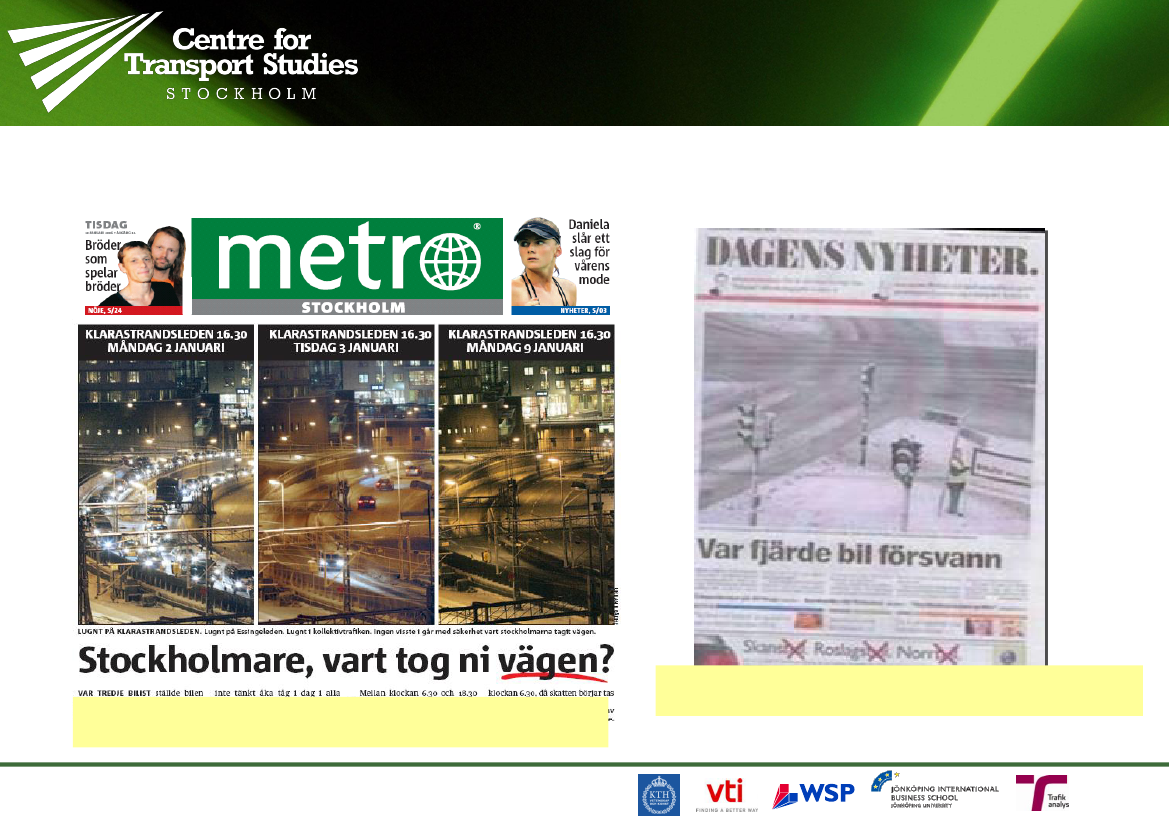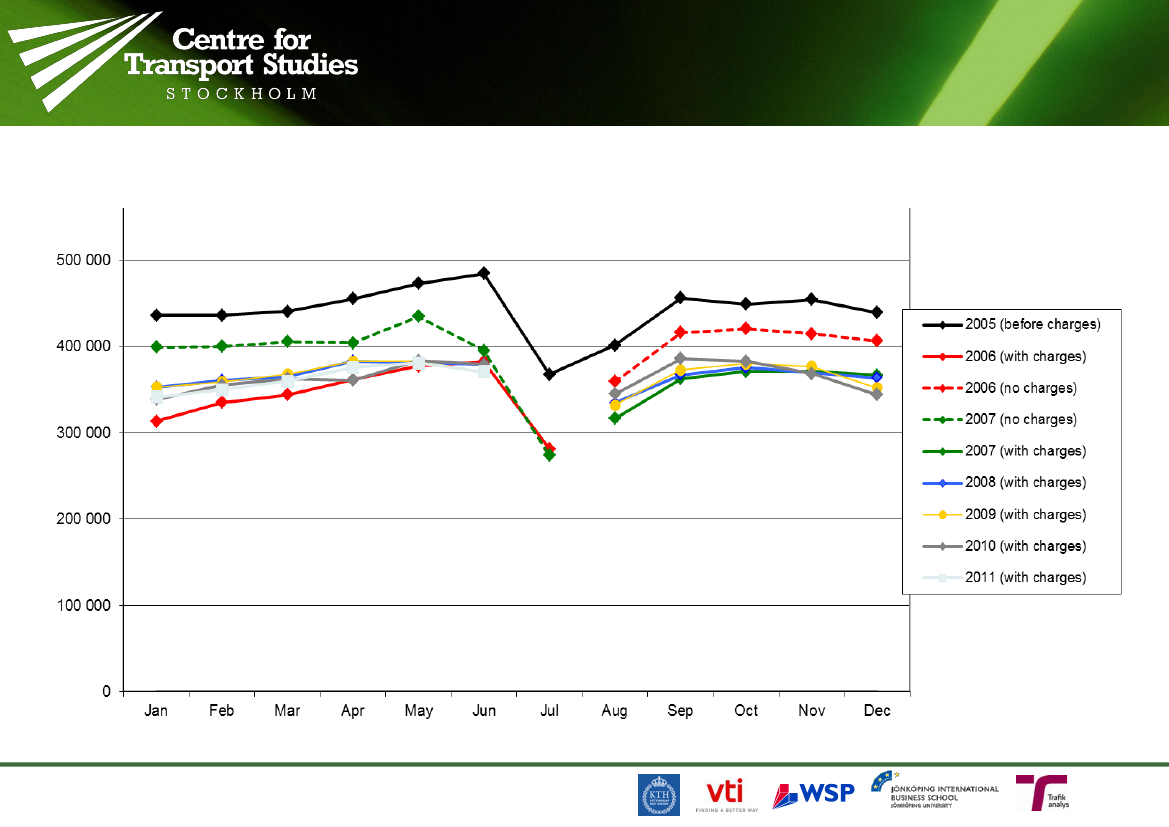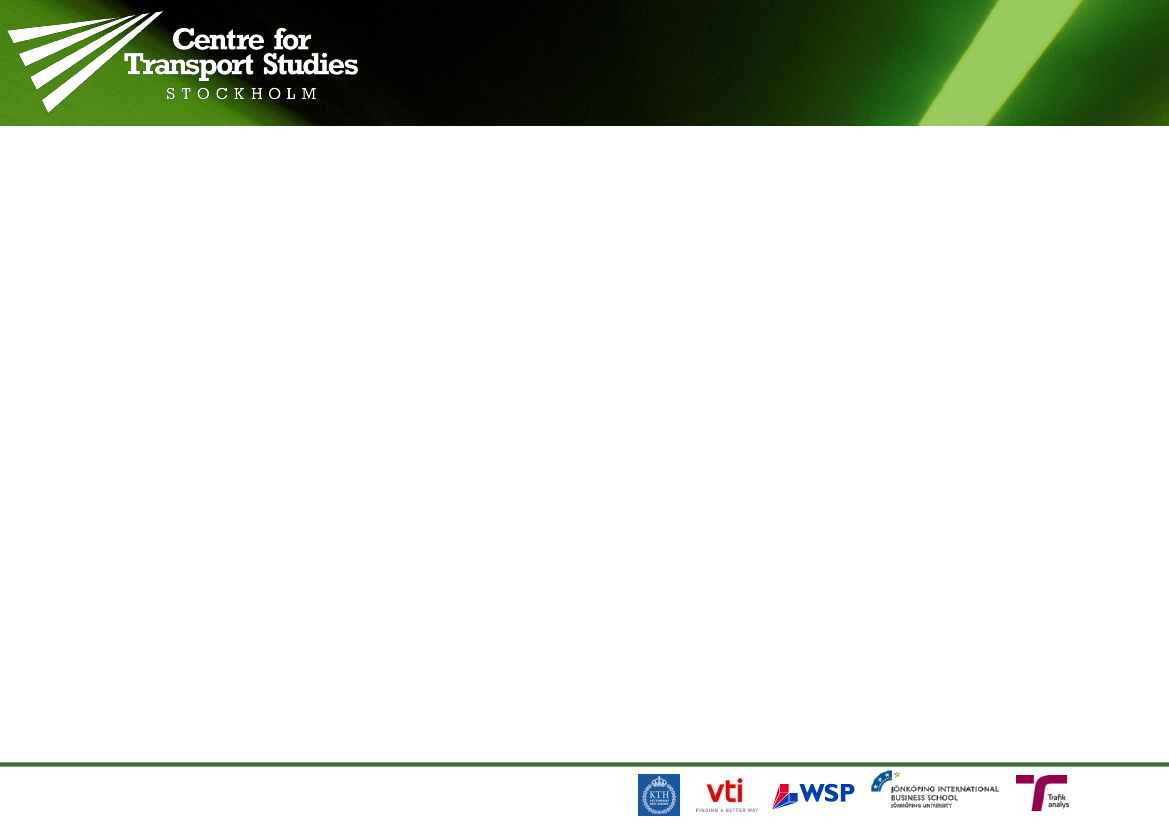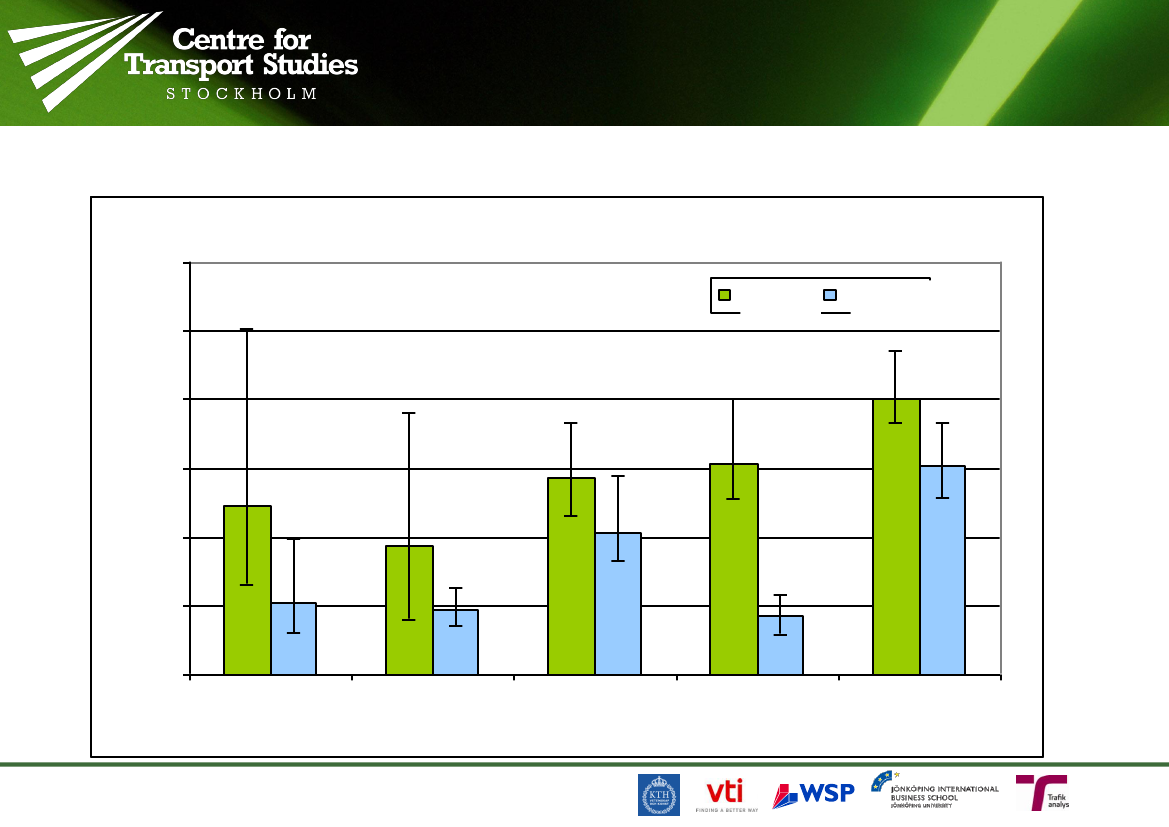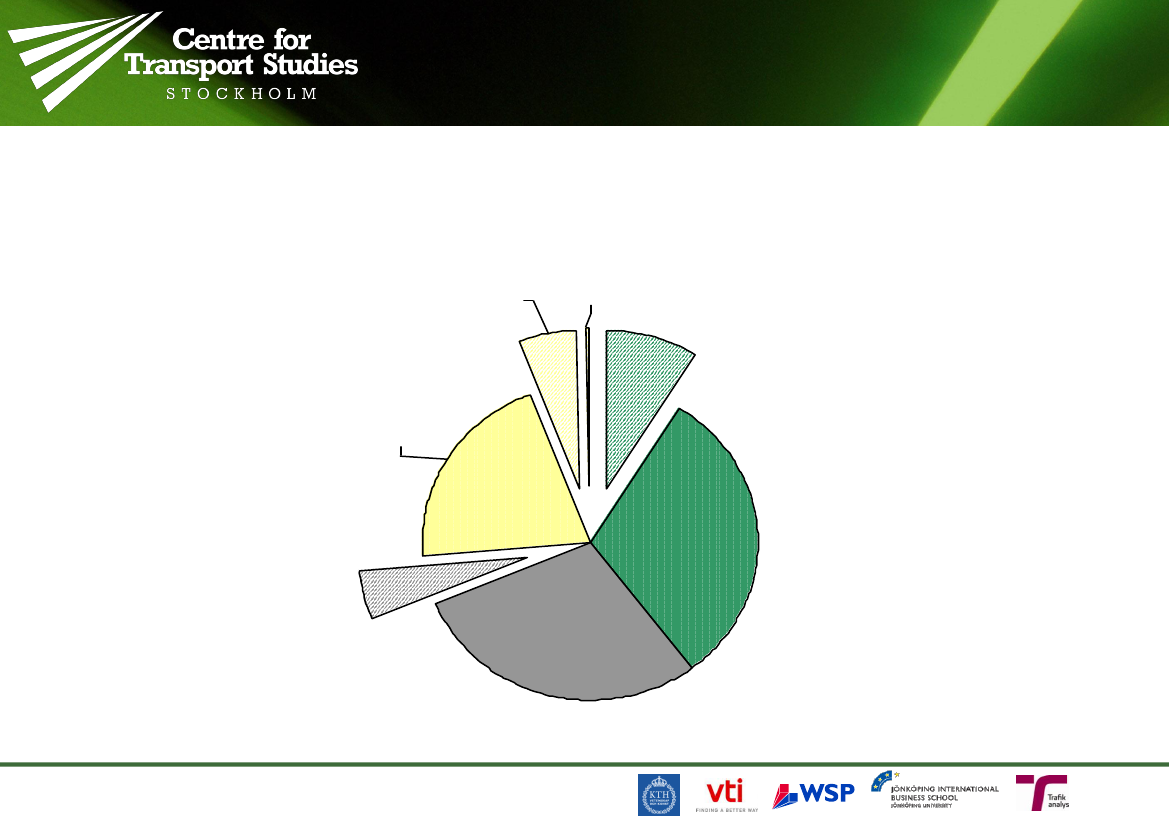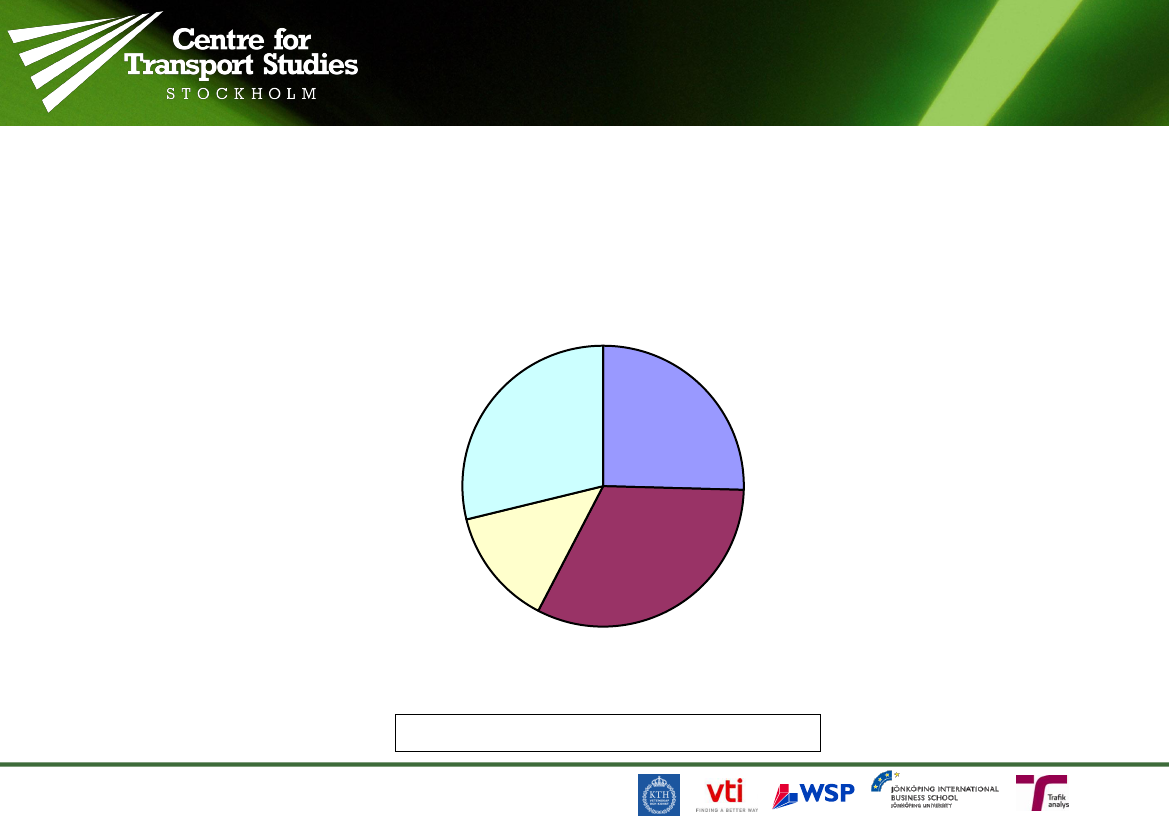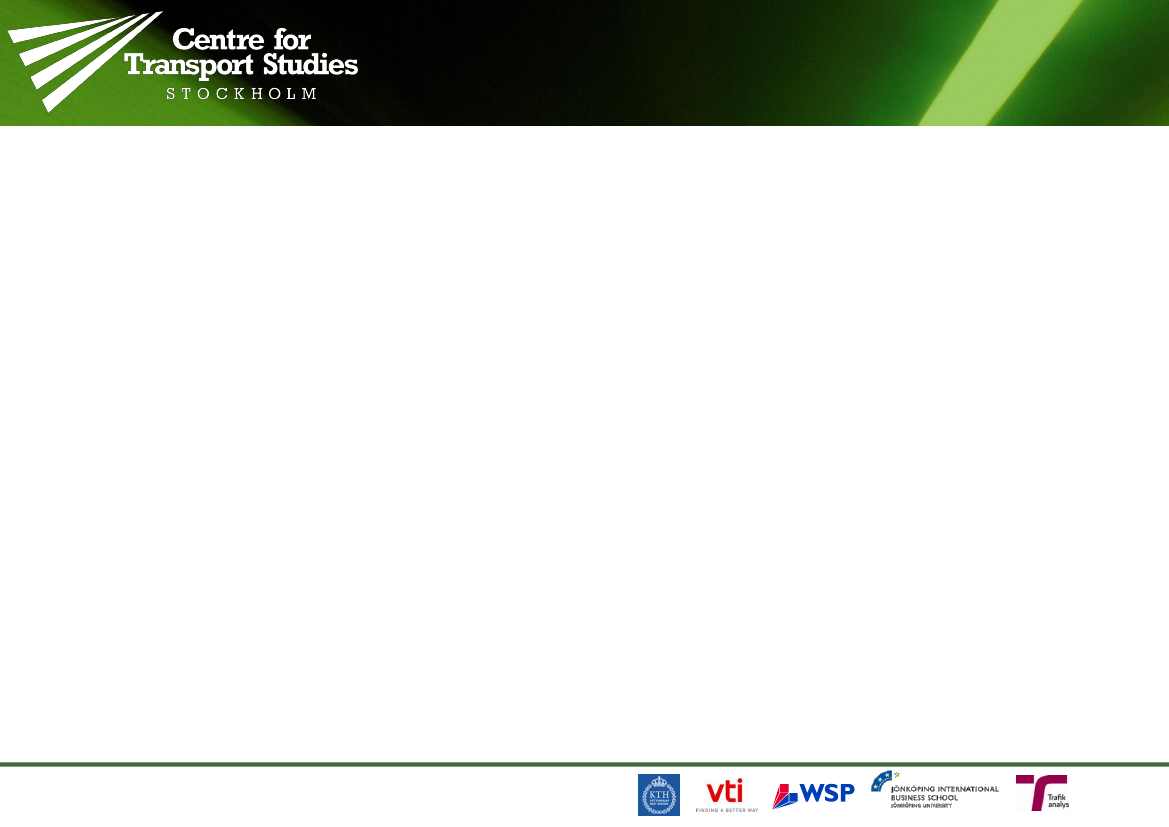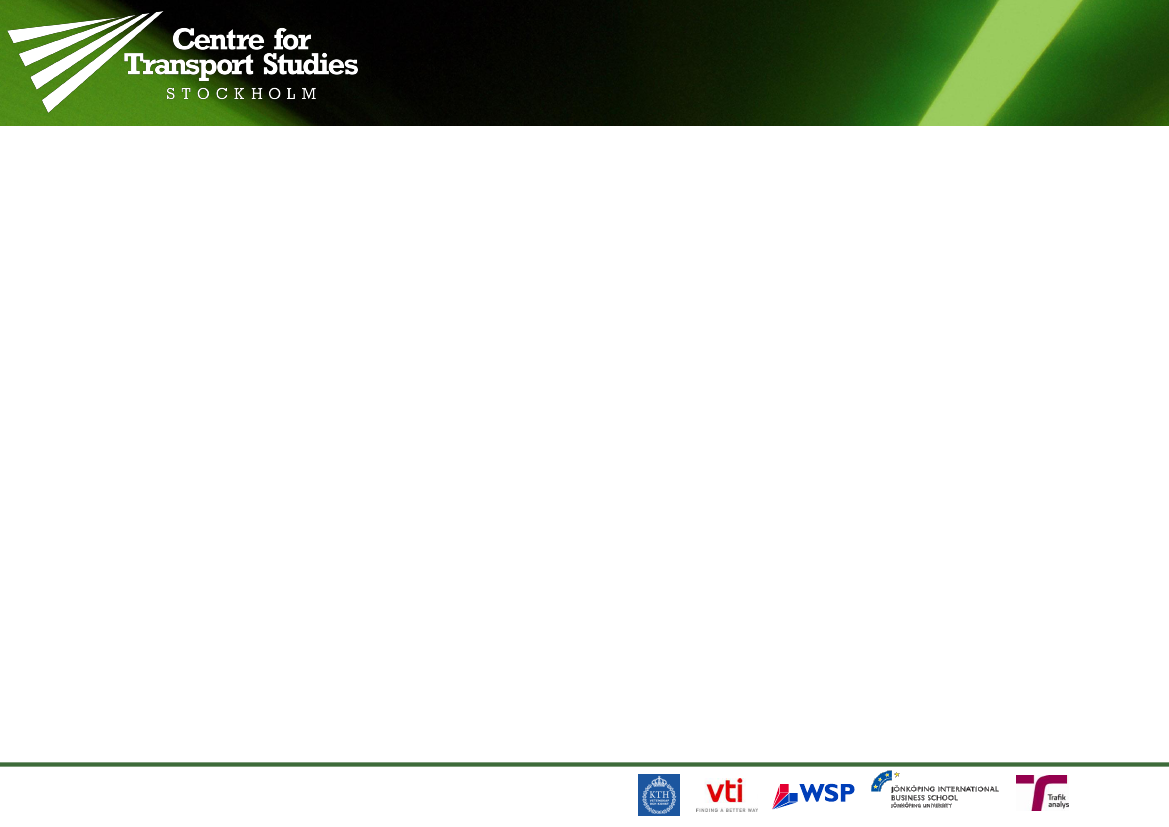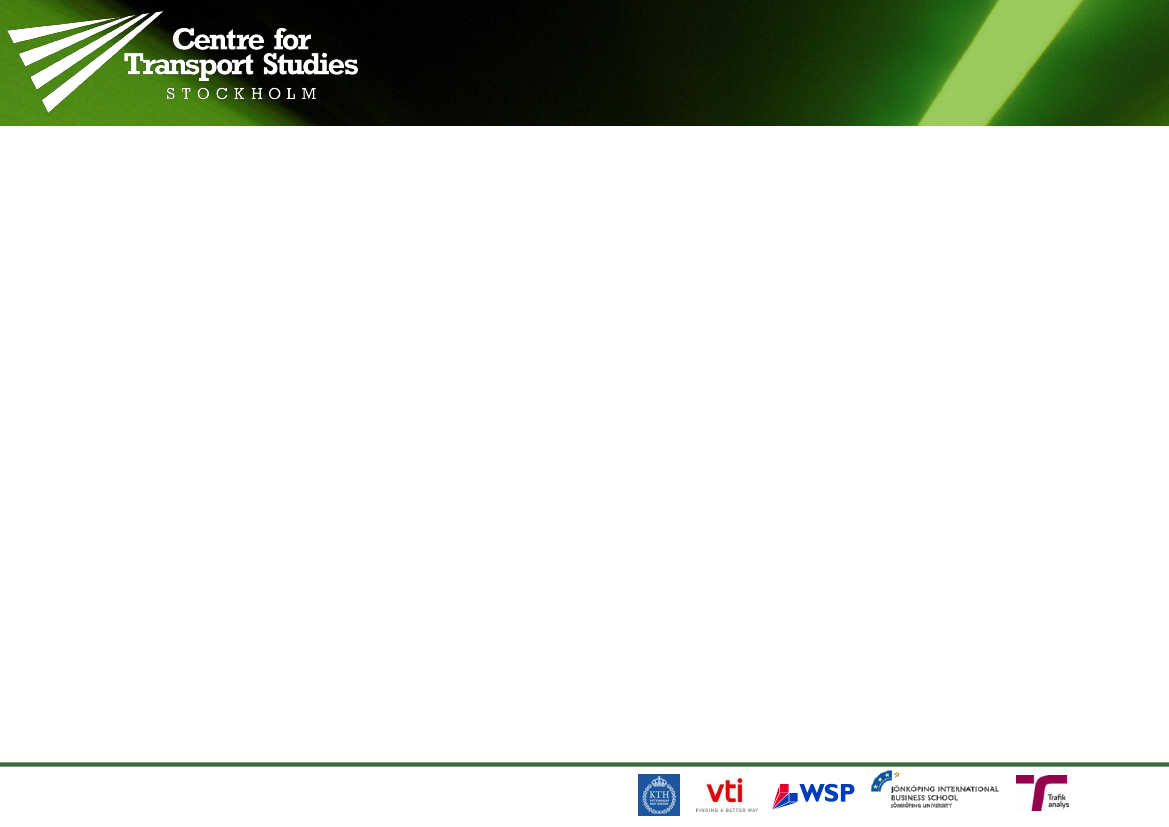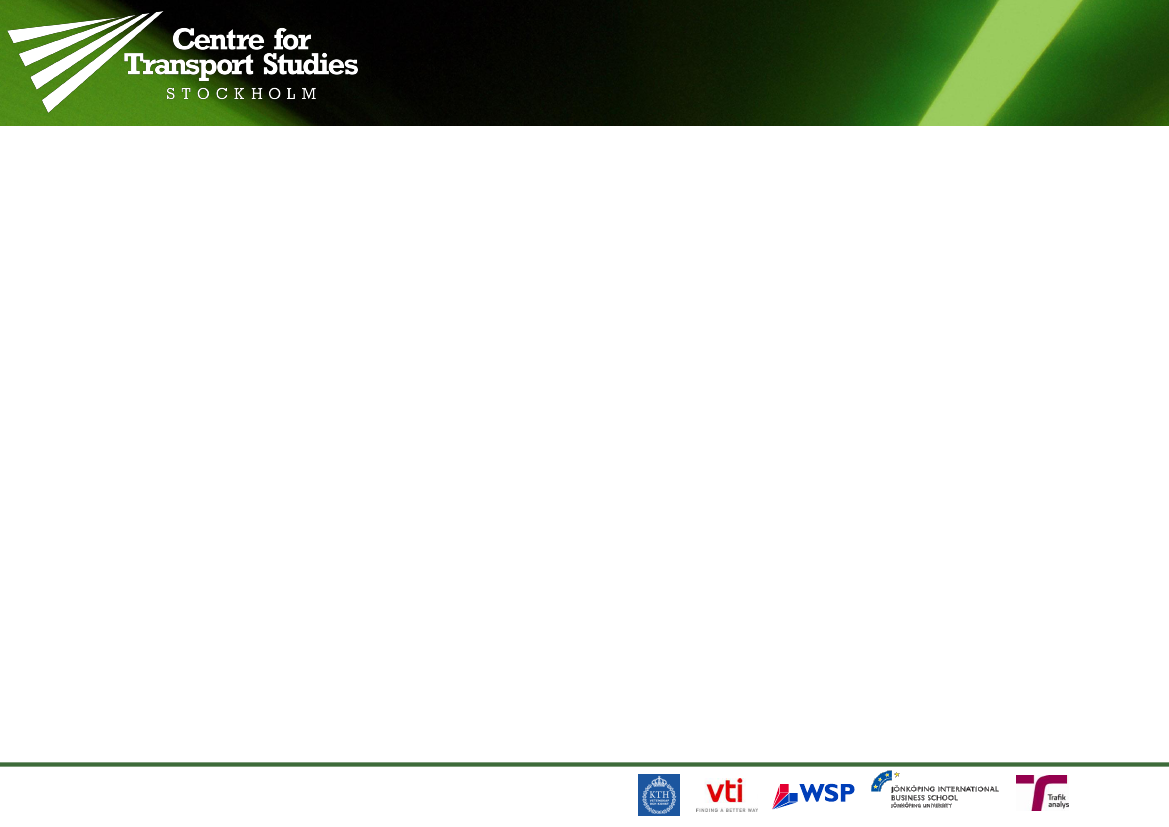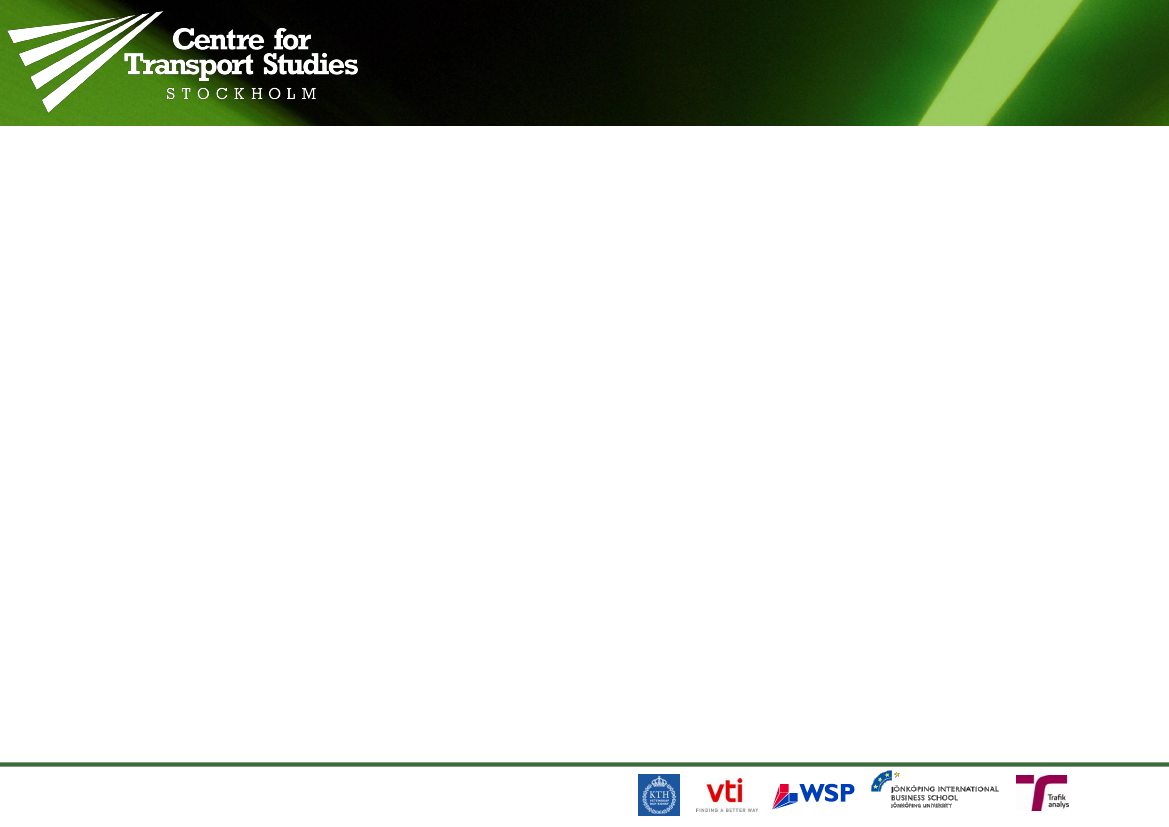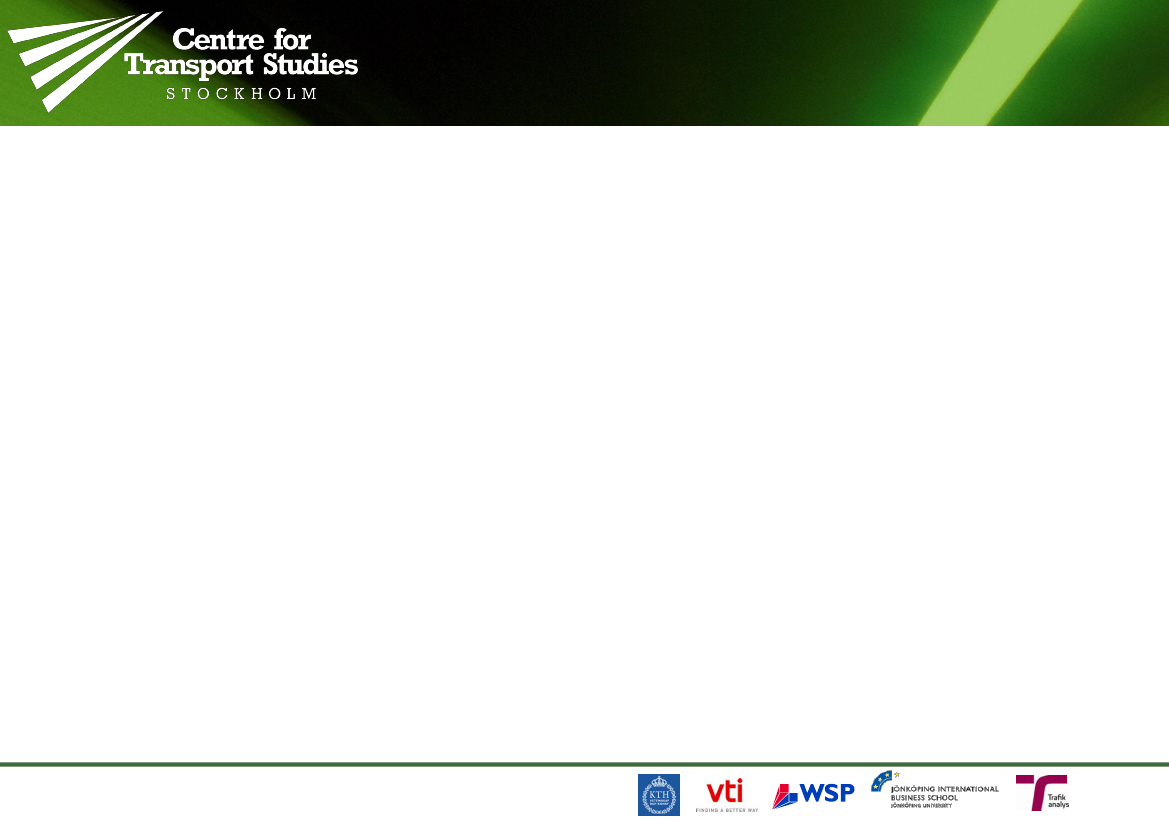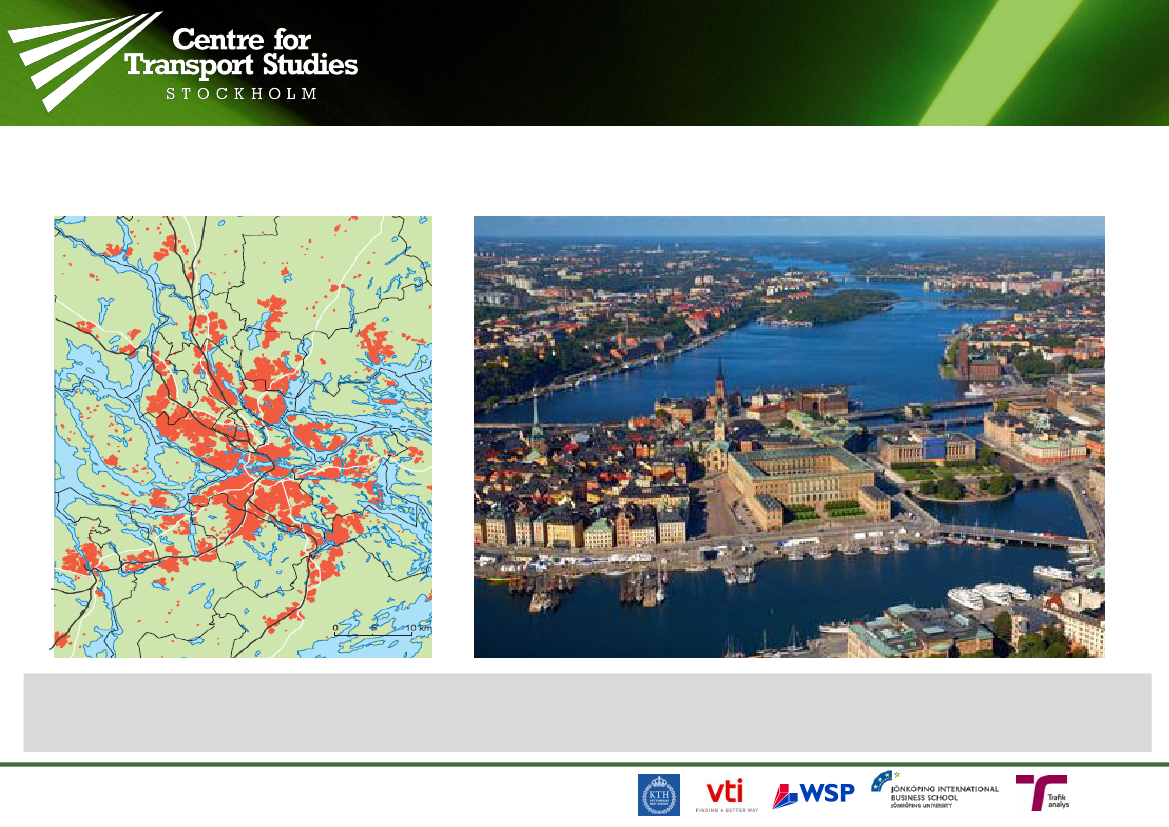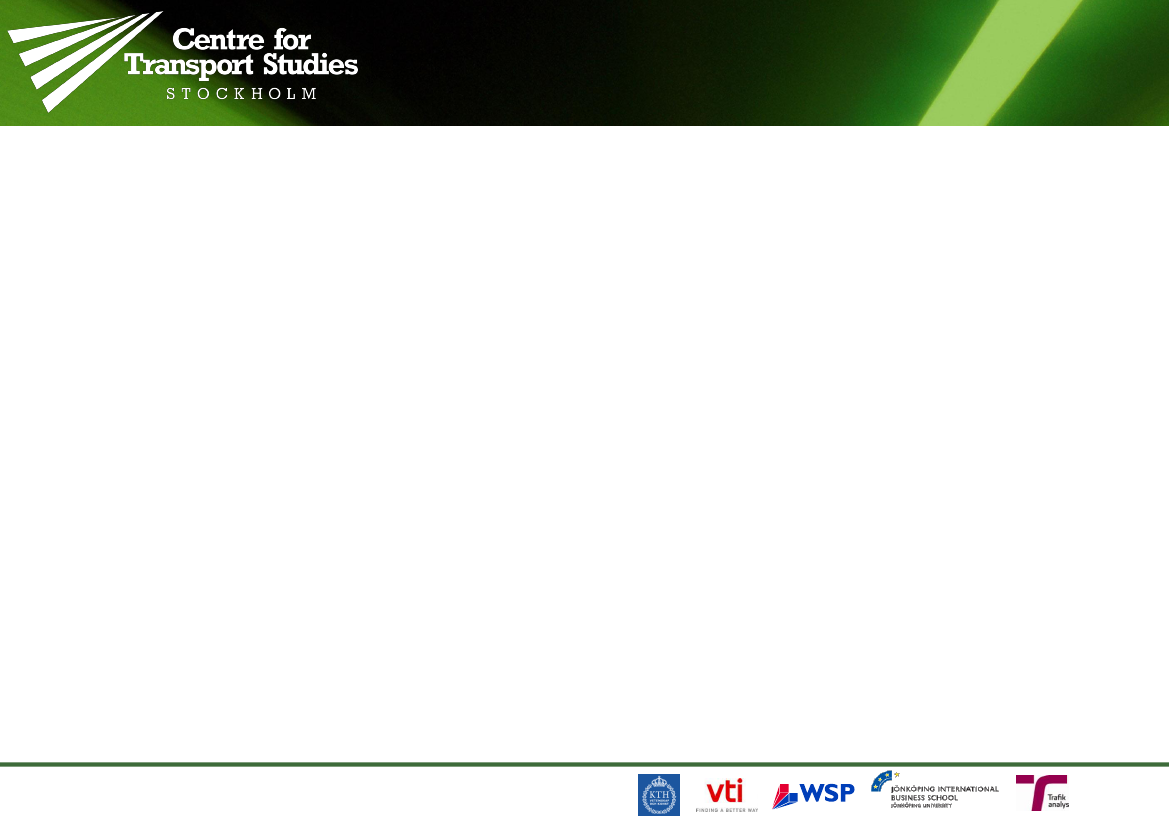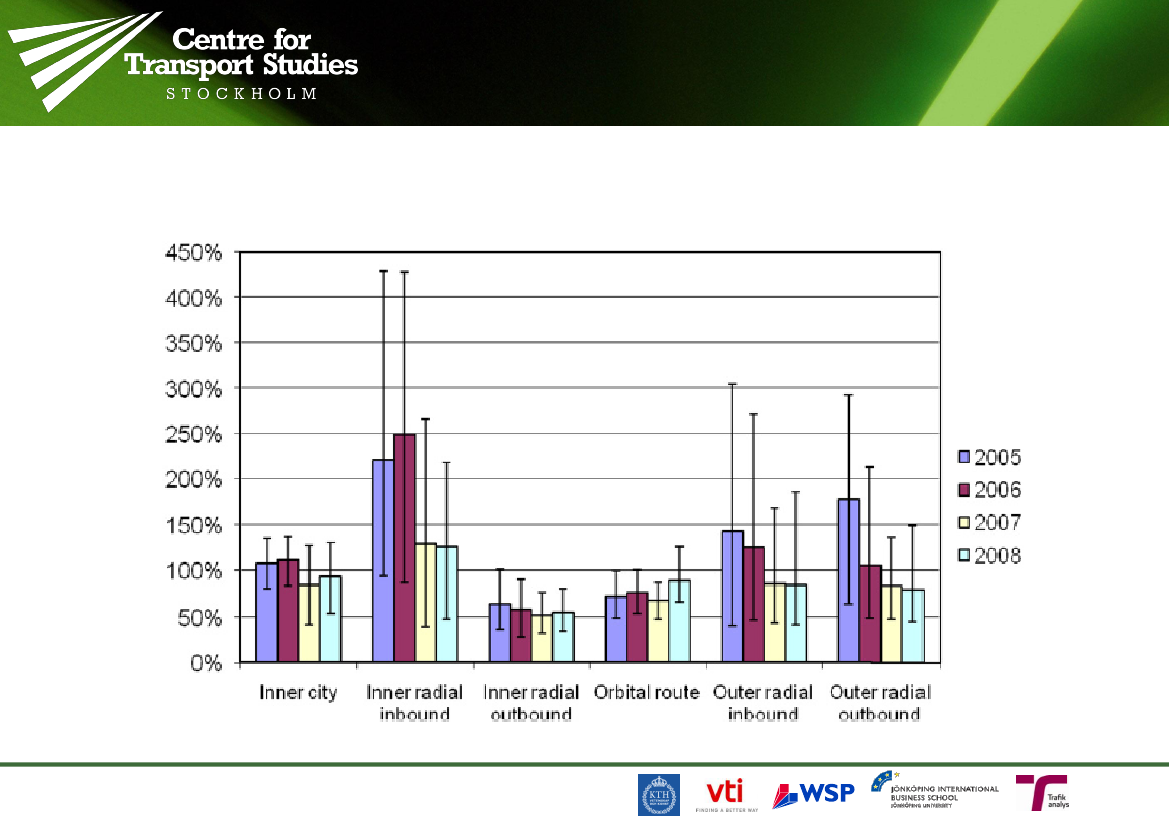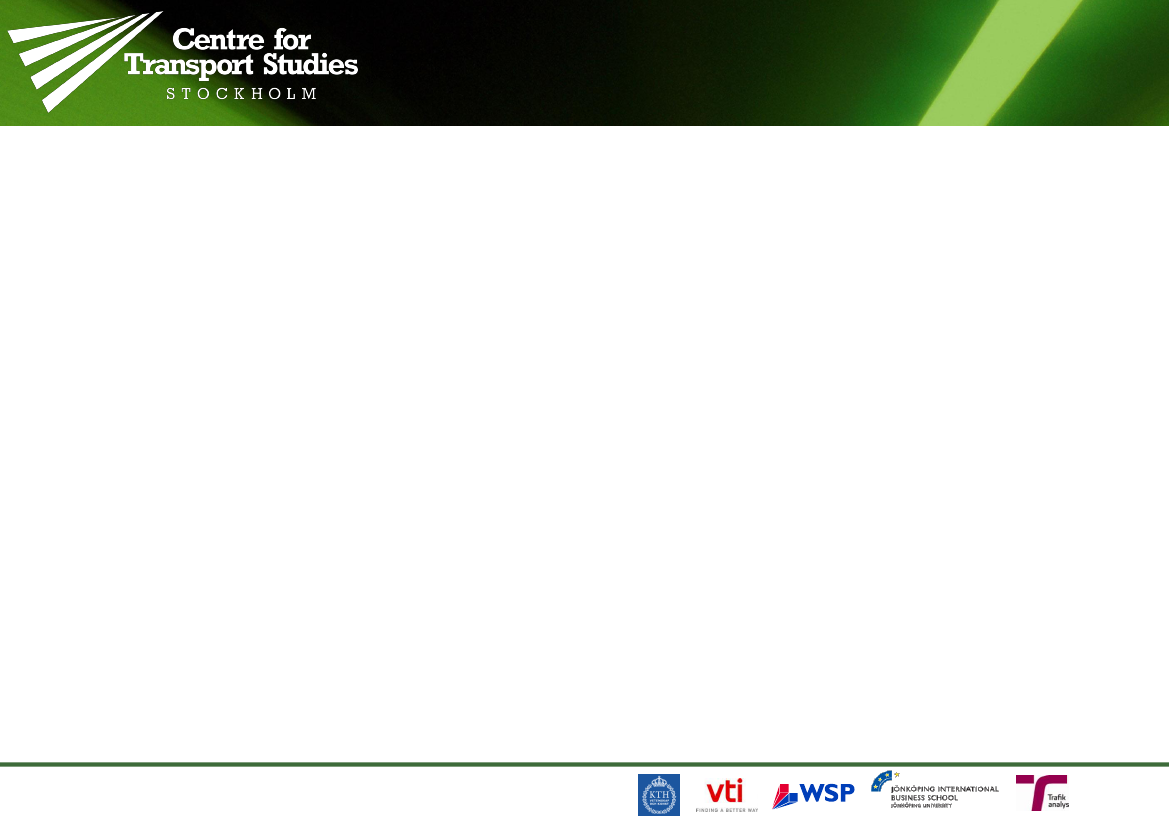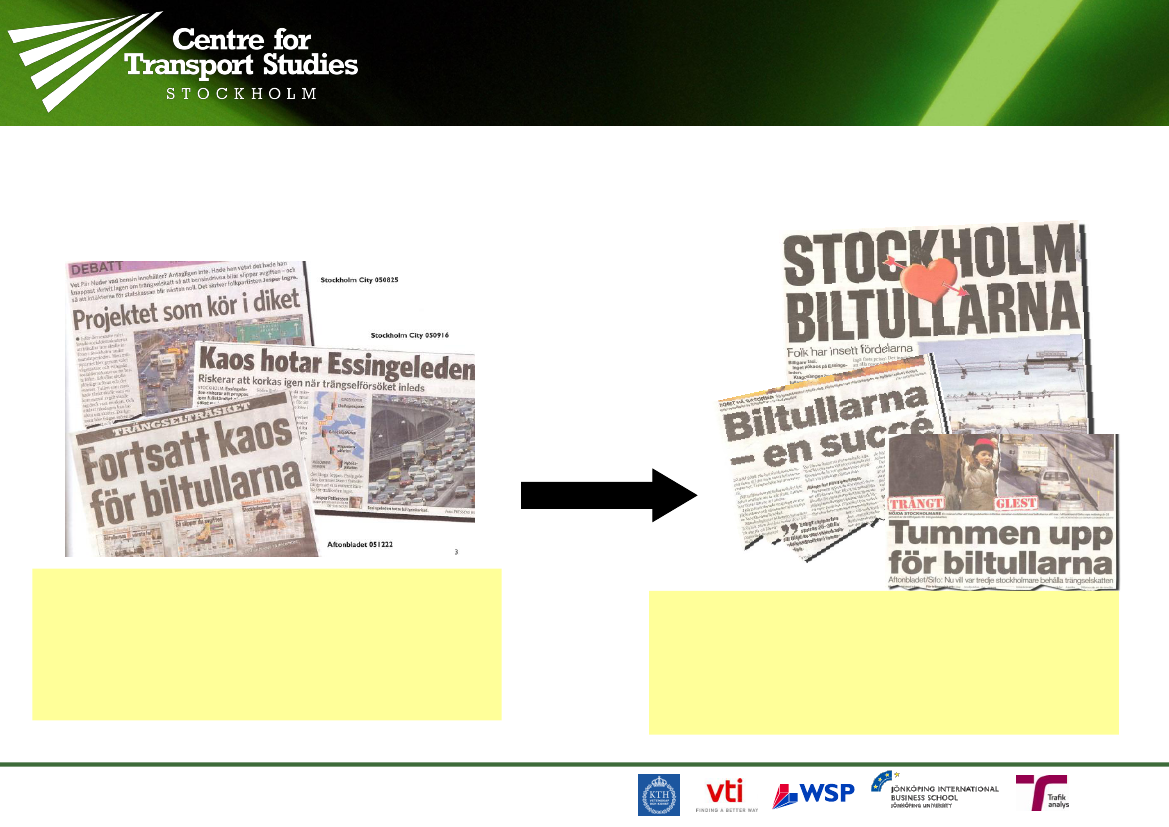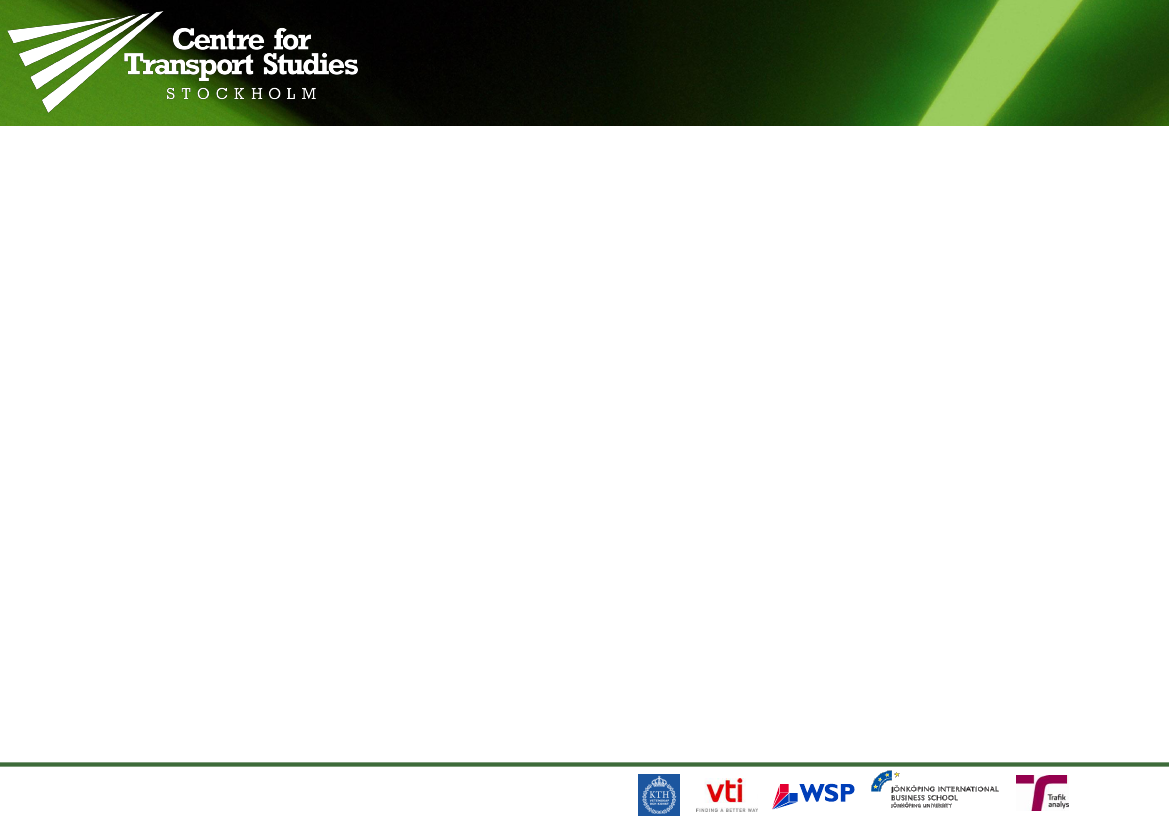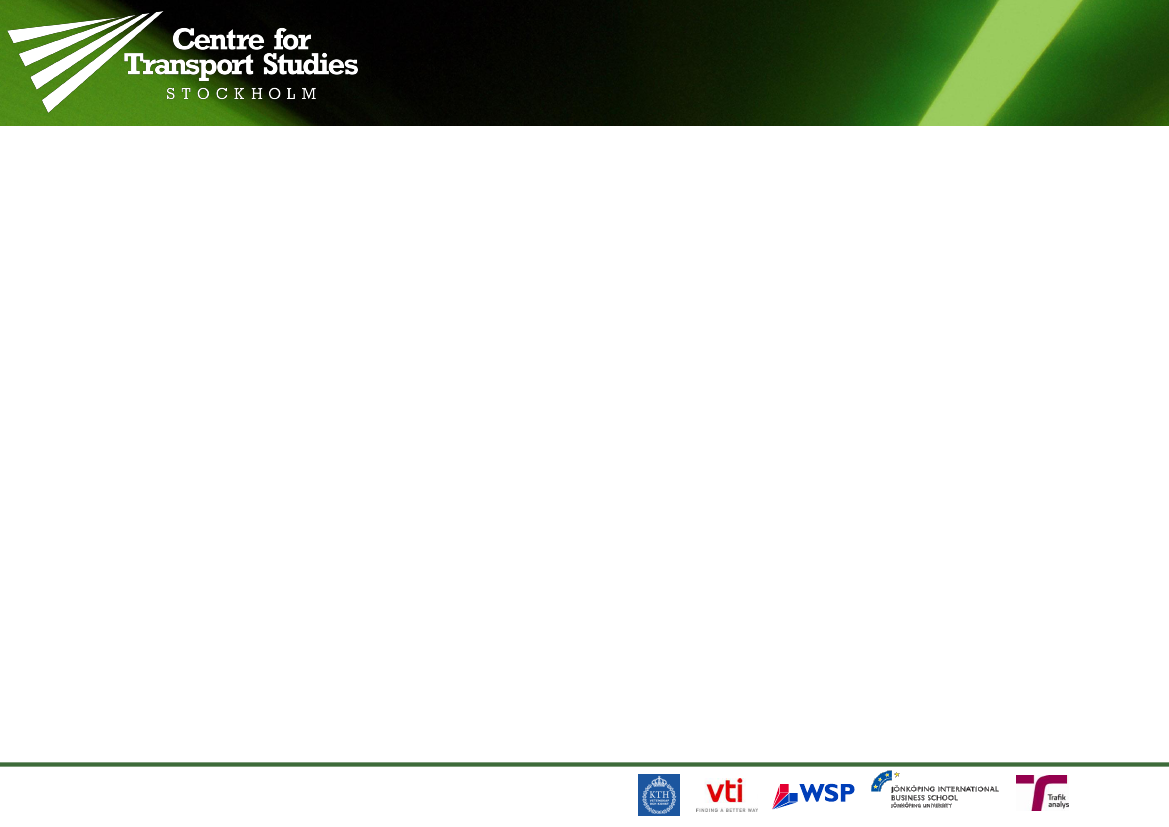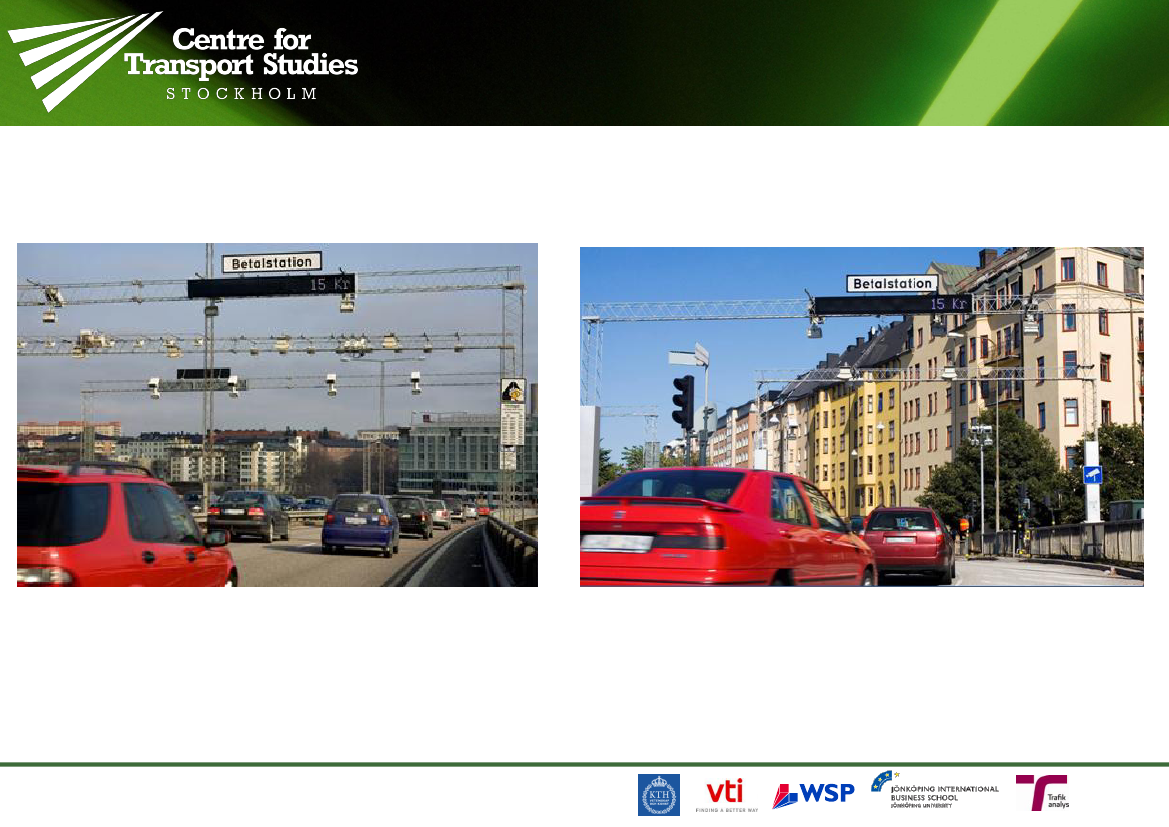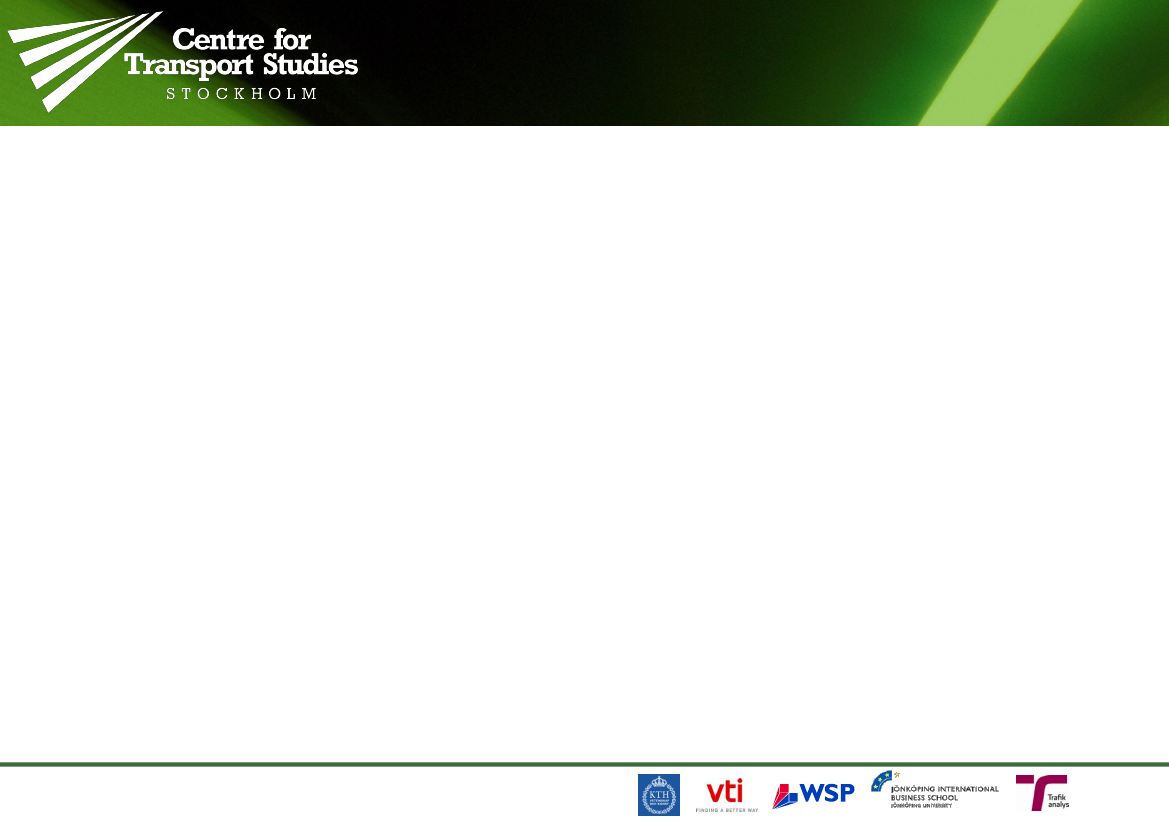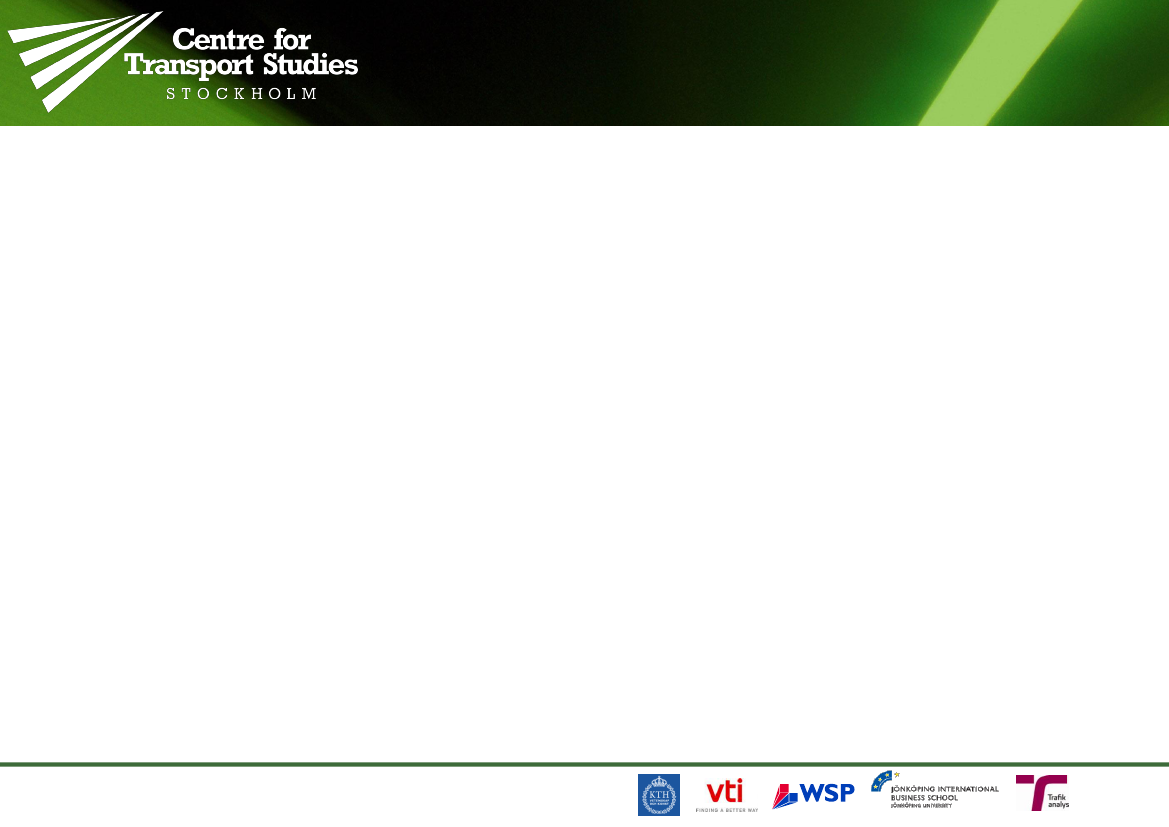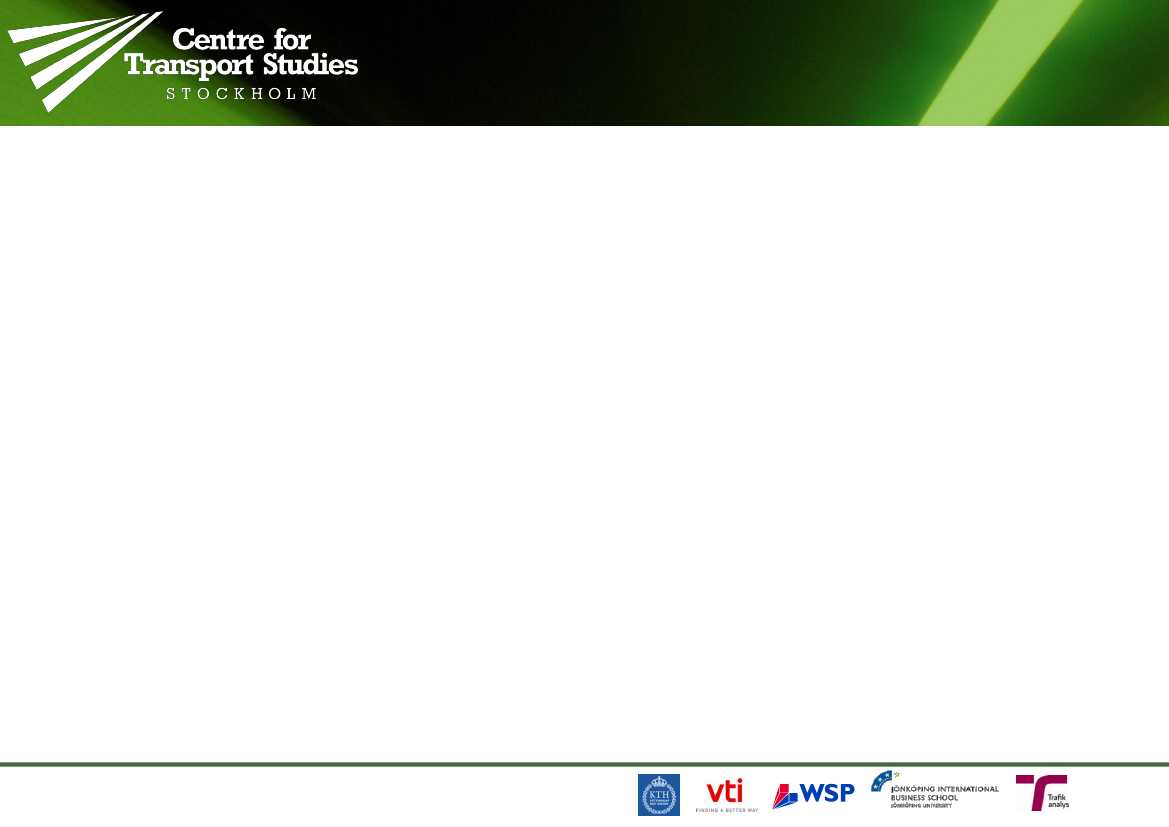Transportudvalget 2011-12
TRU Alm.del Bilag 144
Offentligt
Inför trängselavgifter i Köpenhamn:Erfarenheter från Stockholm
Jonas Eliasson, Maria Börjesson, Carl HamiltonCentre for Transport Studies
(1)The basics:How and why it works
Why congestion pricing?•Road congestion cannot be solved by investments in roads ortransit alone••Scarcity of urban landFinancial constraints
•Need to use road capacity efficiently•A price (rather than a queue) will prioritize most ”valuable” traffic (freight, commuting)
•••
Congestion pricing and investments are ”substitutes”•in the sense that they reduce the the ”need” for the other
… but generally speaking, growing urban regions will need bothOnly introduce congestion pricing when it‟s needed•cheaper and more efficient ways to get revenues or reduce carbon emissions
It works.
”Stockholmers, where did you go?”
”Every fourth car disappeared”
Effects are persistent
Are drivers ”getting used to” the charges?•Traffic across the cordon a few percent higher•Are the charges losing their effectiveness?•NO: after controlling for population, inflation, changed taxregulations, fuel prices etc….•… the toll elasticity ishigherin the long term than in the shortterm (-0.86 compared to -0.70)
30-50% less queues; increased predictabilityKötid, eftermiddagsrusningDelay time, PM peak300%em 20052005250%em 20062006
April 2005/2006
200%
150%
100%
50%
0%inreinfartINInner mainroads, inboundinreinfartUTinnerstadsgataInner main roads, Inner main roads,innerstadsledN innerstadsledSInner cityInner mainstreetsnorthboundroads, outboundsouthbound
There are many ways to adapt – not just mode and route choice… and traffic isn’t just work tripsTripsDiscretionary - toDiscretionary -Ess."disappeared"Work - to transit
Discretionary -remaining
Work - remainingProfessional traffic -"disappeared"
Professional traffic -remaining
People change from day to dayand over longer periods they move and get children and grow older and…
Habitual (5trips/week)29%
Seldom (< 1trip/week)25%
Frequent (4trips/week)14%
Occasional (1-3trips/week)32%
Private cars across cordon
(2)Designing congestion charges
Designing charges is difficult
Setting up a design process•Define the purpose(s)••••Easy to communicate laterKeep politicians away from design detailsForce them to talk about purposes, goals, constraintsUse a good transport model (a speech of its own…)
•Designing congestion charges is a job for experts
•Design and forecast carefully
Effective or simple?•Singapore and “value pricing” are “complicated” designs – thatwork
•A simple system may be nearly as good as a first-best one•Don‟t make it too simple – need to achieve benefits!•The lure of simple systems is strong – be wary
(3)Acceptability
Support decreases with detail,increases with familiarity
Who accepts congestion charging?Accept when•Care about environment•Trust government•Ride transit / bicycle•Revenues are earmarkedDisprove when•Feel over taxed already•Distrust politicians•Drive much car•Poorly educated
Matters less:Age, gender, income, family size, employment, work time, attitude toallocation principles, pricing in other fields or income distribution
Conclusions•Congestion charging is a complex mechanism. Very few “get it”•Judge it by its look: A market distorting tax. An attack on car drivers.A project for the environment. Or climate change.•But it‟s neither!•Congestion charging is about spending less time in car queues &making travel times more predictable.
•All other benefits (and costs) are small in comparison.•But public opinion is generally formed around all those other things.
Reservbilder
Why a ”success”?•••••The technical system workedInformation had worked – people knew what to doVisible congestion reductionsExtensive scientific evaluationClear objectives – that were reached
•”Fair and efficient” design that was consistent with the statedobjective•Political acceptance: revenues part of ”investment package”
Stockholm – a city on water
High congestion levels despite road investments and very efficient transit systemSimply not enough land for more roads or railways!
The Stockholm congestion charges
•••
Introduced 20061-2 € per cordon crossing, depending on time of dayHigher charge during rush hours (AM and PM peaks); no charge evenings/weekends
Traffic effects
Essingeleden – Södra länken
Travel times autumn 2005-2008
Costs and benefits
CBA results – overviewmillion Euro per yearTime gainsReduced emissionsIncreased traffic safetyOperational costIncreased public transit revenuesNecessary increase in public transport capacityDecreased revenues from fuel taxesMarginal cost of public funds, shadow price of public fundsTotal socioeconomic surplus, excl. investment costsInvestment cost 210 million Euros –
561014-2420-7-61376
annualised cost 16 million Euros (assuming 20 years lifetime)
Social and financial surplus –if the system is run for more than 4 years•The congestion charge gives afinancialsurplus of around 550mSEK/year(net of running costs)
•… and asocialsurplus of around 700 mSEK per year(net ofrunning costs)
•Investment+ first year running costs were 1900 mSEK•Both financially and socially profitable in around 4 years
Acceptability
Attitudes change after introduction
”Charges heading for the ditch”
”Bypass threatened by chaos”
”Charging chaos continues”
”Stockholm loves the charges”
”Charges a success”
”Thumbs up for the charges”
Political acceptability•Political acceptability is different from public acceptability•The latter is neither necessary nor sufficient for the formerDecisive factors:•Power over revenues and system design
•What happens to national grants to regional infrastructure
Technical system
Toll gantries
•Free-flow identification (no ”toll plazas”)•Monthly bill is sent to vehicle owner
•… or charge drawn automatically from pre-specified account
Unstable political, institutional or legal situationsincrease costs•High political risk is costly•••Will push risk onto contractors……who will require risk premium…… and try to build ”too” fool-proof system
•Get legal conditions clear early••What is a valid ”proof of passage”?What possibilities to appeal must exist?
Cost drivers in Stockholm•The political context•“We all though this was the biggest political suicide in history. The Lib/cons.could just stand back and watch the Left-Green coalition commit it”(GunnarSöderholm, Stockholm City )“I told IBM several times: „It is fully possible that this all goes to hell. But if itdoes, I will make sure that you are going down with me.‟ ” (Birger Höök, RoadAdministration)Risk reduction by e.g. redundant components
•Political risk => Administrative risk => Commercial risk•
•Insurance costs•
Be aware of cost drivers•Choose service targets cost-efficiently•Identifying 99,9% of passages rather than 97% makes no difference fordrivers‟ behaviourmonthly bills rather than single transactionspersonal support (telephone, shops…) is expensiveExample: customer service response time
•Choose cost-efficient payment channels•••
•Align costs and risks in functional procurements
